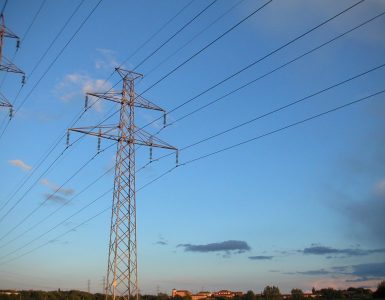“The aim of GERS is to enhance public understanding of fiscal issues in Scotland.”
Right then, let’s take a closer look at GERS: As with any financial transactions, it pays to attend to the small print. Same waiver as in Pt1.
Here goes:
2015-16 Income:
- Including an illustrative geographic share of North Sea, Scottish public sector revenue was estimated as £53.7 billion (7.9 per cent of UK revenue).
- Of this, £60 million was North Sea revenue.
- The year before North Sea revenue was £1.8 billion which just goes to show the effect of long-term falls in oil production and recent falls in oil price.
- Scotland’s public sector revenue is equivalent to £10,000 per person, £400 less than the UK average, regardless of the inclusion of North Sea revenue.
And when we put the GERS income per head of population into a graph and compare Scotland with UK over the period 1998-2016, it looks like this:

So that’s useful. As far as public revenue goes…
- including North Sea revenues, we’ve been doing better than UK as a whole except for 2015-16 when the revenues fell to just £60million. The blue and red lines.
- it looks likely that per capita income an independent Scotland with NorthSea revenue, would have done better than rUK, even if we had used none of the economic levers to boost our economy that we’d have control over as an independent state.
- excluding North Sea revenues, the purple and green lines, the graph shows that revenue per capita in Scotland, independent or not, tracks the UK or rUK. Ignoring for the moment that an independent Scotland would be able to evolve its own economic policies in a way that it can’t do at present.
- Worst case? Revenue Alba tracks Revenue rUK.
- Better case? Revenue Alba benefits from an economic policy fit for Alba purpose.
2015-16 Expenditure:
- Total expenditure for the benefit of Scotland by the Scottish Government, UK Government, and all other parts of the public sector was £68.6 billion.
- This is equivalent to 9.1 per cent of total UK public sector expenditure, and £12,800 per person,
- which is £1,200 per person greater than the UK average.
- Which isn’t so good as it means there’s a gap of £2,800 per person between public revenue and public spending.
Oh dear, that sounds like a Mr Macawber dose of misery.
More precisely, Net Fiscal Balance 2015-16: This is the difference between total revenue and total public sector expenditure including capital investment.
- The net fiscal balance for Scotland, excluding North Sea revenue, was a deficit of £14.9 billion (10.1 per cent of GDP).
- Including an illustrative geographic share of North Sea revenue, it was a slightly smaller deficit of £14.8 billion (9.5 per cent of GDP).
- The UK overall had a deficit of £75.3 billion (4.0 per cent of GDP).
It’s looking pretty dire, isn’t it? Let’s put the revenue and expenditure figures together and see what it looks like over 1998-2016 for Scotland and for the UK. All figures are per head of population:
Including North Sea revenues on a geographical share for both Scotland and UK:

And the same but excluding all North Sea revenues:

At first I was surprised at the closeness with which Scottish revenue tracks UK revenue. In the back of my mind I’m holding the thought that having a Scottish Parliament with devolved powers would mean a divergence between Scottish and UK revenues. But of course that’s daft. It’s Westminster which makes the economic leverage decisions like levels of VAT, personal and corporation taxes so of course Scottish revenue tracks the UK. The more useful info is that it’s pretty much the same as overall UK revenues per capita. In fact at the present revenues are £400 per person less in Scotland. Our population is currently 5,375,000 (GERS 2016 Table A.1) so that corresponds to £2.15 billion less revenue overall.
On the other side of the balance sheet, more has been spent per person in Scotland for as far back as these figures go. And that gap has increased over the last 16 years. Presumably some of that is down to economies of scale? I’m thinking that a higher population density makes it cheaper to provide sufficient health services per capita, for example, as opposed to low density as in Scottish Highlands where health facilities and services of necessity serve small populations but still need significant investment.
But, no getting away from it, Scottish finances seem to be in a bad way, no? We’re spending nearly £3,000 more per head of the population that we’re generating in revenue.




